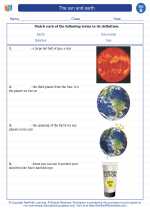Vitamins
Vitamins are essential nutrients that our bodies need in small amounts to function properly. They play a crucial role in various bodily functions, including metabolism, immunity, and overall health. There are 13 essential vitamins, each with its own specific function and sources.
Types of Vitamins
There are two main categories of vitamins: water-soluble vitamins and fat-soluble vitamins.
- Water-soluble vitamins: These vitamins dissolve in water and are not stored in the body. They need to be replenished regularly through diet. Examples include vitamin C and the B vitamins (such as B6, B12, thiamine, riboflavin, niacin, pantothenic acid, and biotin).
- Fat-soluble vitamins: These vitamins are stored in the body's fatty tissue and liver. They can be stored for longer periods and do not need to be consumed as frequently. Examples include vitamins A, D, E, and K.
Sources of Vitamins
Vitamins can be obtained from a variety of food sources, including fruits, vegetables, dairy products, meat, fish, and fortified foods. It's important to consume a balanced and varied diet to ensure an adequate intake of all essential vitamins.
Functions of Vitamins
Each vitamin has a specific role in the body, such as supporting immune function, promoting healthy vision, aiding in the production of red blood cells, and contributing to bone health. Deficiencies in certain vitamins can lead to various health problems, so it's important to maintain an adequate intake of all essential vitamins.
Study Guide
- What are the two main categories of vitamins? Provide examples of vitamins in each category.
- Why is it important to consume a balanced and varied diet in relation to obtaining essential vitamins?
- Discuss the functions of at least three different vitamins and the potential health problems associated with their deficiencies.
- Identify food sources for different vitamins and explain how dietary choices can impact vitamin intake.
- Explain the differences between water-soluble and fat-soluble vitamins in terms of storage in the body and frequency of consumption.
◂Science Worksheets and Study Guides Second Grade. The sun and earth

 Activity Lesson
Activity Lesson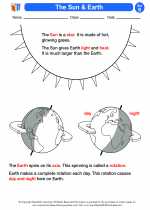
 Worksheet/Answer key
Worksheet/Answer key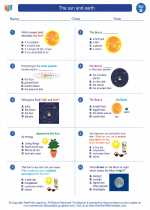
 Worksheet/Answer key
Worksheet/Answer key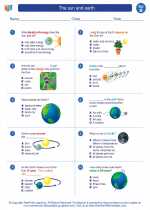
 Worksheet/Answer key
Worksheet/Answer key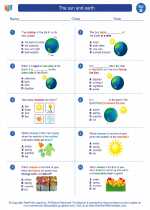
 Worksheet/Answer key
Worksheet/Answer key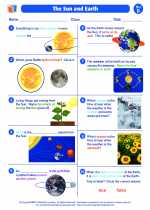
 Vocabulary/Answer key
Vocabulary/Answer key